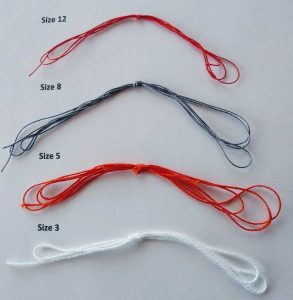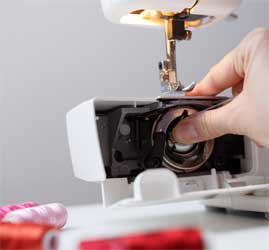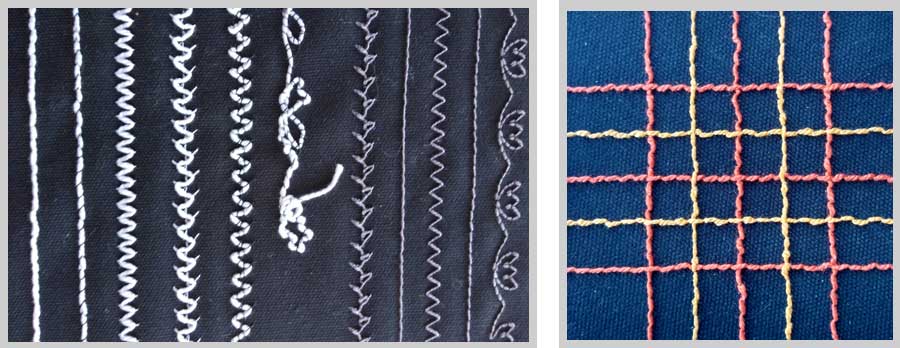You’re probably familiar with pearl cotton for hand stitching efforts like cross-stitch, embroidery, smocking, threadwork and also for crocheting, but did you know that you can also use it in your sewing machine?

Pearl cotton is a two-ply, twisted thread with a high sheen and it comes in a multitude of colors and some variegations. It’s available by the skein or by the ball, depending on the quantity you need.
 The thread is categorized by its strand size, you’ll find size #3, 5, 8 and 12 to be the most common sizes–the higher the number, the smaller the thread diameter. All four of these sizes can be used with machine sewing, but perhaps not as you might think.
The thread is categorized by its strand size, you’ll find size #3, 5, 8 and 12 to be the most common sizes–the higher the number, the smaller the thread diameter. All four of these sizes can be used with machine sewing, but perhaps not as you might think.
Pearl cotton needs to be used in the bobbin of the machine, not on the top, so you’re stitching with your project upside down! The good part about that is that you can draw lines or shapes to follow on the back of your project and no one will know.
On most machines, you can wind pearl cotton onto the bobbin using the standard bobbin-winding mechanism. Be careful not to overfill the bobbin so that it still moves freely in the bobbin case. For large projects, wind multiple bobbins before you begin. If need be, you can also wind the bobbin by hand, keeping it even as you wind.
Did you know that the name of this thread can be spelled pearl, perle or perlé, depending on the manufacturer?
Thread Tales
For a top thread, there are several options—matching thread, invisible thread or a contrasting thread—depending on the desired finished look. So, do some test stitching to check the results of these thread options.
Choose a stitch that’s fairly open, as satin-stitch designs can easily jam with the larger than normal thread. Watch for reverse pattern stitches where the needle penetrates the fabric in the same place, as the thread build-up at a single point can break needles. Most utility stitches and openwork decorative stitches work well with pearl cotton. Straight stitch is ideal for topstitching and quilting.
Making it Happen
 Insert the bobbin in the machine, bypassing the bobbin tension spring. Use the handwheel to bring the bobbin thread to the top so you can hang onto it as you begin sewing. Turn off any automatic thread cutting feature.
Insert the bobbin in the machine, bypassing the bobbin tension spring. Use the handwheel to bring the bobbin thread to the top so you can hang onto it as you begin sewing. Turn off any automatic thread cutting feature.
With the wrong side of your project up, stitch slower than you normally would. If your design doesn’t begin or end in a seam, bring the thread ends to the fabric underside and tie off to secure. For quilts, bury the tails between the layers.
Because the bobbin can only hold a limited amount of this heavier thread, you may not be able to stitch great distances, so if you run out of thread in the middle of something, simply bring the ends to the underside, tie off and begin again exactly where you left off.
Playing with Pearl
Once you get going playing with pearl cotton, you’ll have lots of fun thinking of new things to try. Try the same stitches in different weights. Create plaid with two colors and just a straight stitch. Try altering the thread tension as well to vary the looks and create added texture and color.

Left image: Compare the weights—size 3 (white) and size 8 (gray)
Right image: Size 5 pearl cotton, straight stitch “plaid”
~Linda Griepentrog
Linda is the owner of G Wiz Creative Services and she does writing, editing and designing for companies in the sewing, crafting and quilting industries. In addition, she escorts fabric shopping tours to Hong Kong. She lives at the Oregon Coast with her husband Keith, and two dogs, Yohnuh and Abby. Contact her at .





